| Workable Solutions | Step-by-step Troubleshooting |
|---|---|
| Fix File System Check Exit Code Is 8 on External Hard Drive |
|
| Fix File System Check Exit Code Is 8 on Macintosh HD |
... |
What Causes File System Check Exit Code Is 8
Did you recently see the File System Check Exit Code Is 8 error on your system? To understand the error, knowing more about file system checks is essential. Well, a file system check is run to prevent or prohibit minor yet undetected issues from becoming severe, and it can be done automatically when the system boots.
One of the most critical repairing tools macOS has is First Aid. You can access it from Mac Disk Utility and run it to resolve minor errors on the disk. However, in some cases, users get an error message during the system check process. The "File System Check Exit Code Is 8" is displayed on external hard drives and Macintosh HD.
Various causes can lead to the File System Check Exit Code Is 8 error. Take a look at some of them:
- ❌Incorrect system settings: Sometimes, the cause of the error is wrong configurations. In that case, you can revisit the settings and set it up accordingly.
- 👿Malware or virus attack: Virus attacks can also lead to the corruption of files, leading to the display of this error.
- 💽Out-of-date drivers: Incompatibility of the drivers with the system is another reason for this error to pop up.
- 🛠️Bad sector on storage disk: If you have a bad sector or unreadable parts in a disk, it will cause the File System Check Exit Code Is 8 error.
- 📑Corrupted or damaged file directory: Corruption in the file directory within the drive can also be another cause of the error.
Don't forget to share this page to help more users fix the File System Check Exit Code Is 8 error!
How to Recover Data from Storage Drive with Software
Are you anxious about data loss after encountering Fix File System Check Exit Code Is 8 error? It is true that, in some cases, data loss does occur. However, there is no need to worry. With professional data recovery software, you can retrieve lost data.
You can use EaseUS Data Recovery Wizard for Mac to retrieve data fuss-freely. This tool can restore different data types, such as music files, videos, emails, photos, documents, etc. You can also retrieve data from multiple Mac-based devices like SSD, HDD, memory card, fusion drive, etc.
Using EaseUS Data Recovery Wizard for Mac, you can restore lost data from various scenarios. These include deleting, partition loss, formatting, repartition, system crash, virus attack, etc.
EaseUS Data Recovery Wizard
- Recover deleted files on Mac, documents, photos, audio, music, and emails effectively.
- Recover data from external hard drive Mac, emptied recycle bin, memory card, flash drive, digital camera, and camcorders
- Repair corrupted files Mac due to hard drive corruption, virus attack, and system crash under different situations.
Are you eager to try EaseUS Data Recovery Wizard for Mac? Follow these simple steps to use the tool:
Step 1. Select the location to scan
Launch EaseUS Data Recovery Wizard for Mac and choose the hard drive, SSD, SD card, USB flash drive, or TF card where you lost data. Click "Search for lost files" to start scanning.

Step 2. Filter lost Mac data
The software will automatically scan for lost data on MacBook/iMac. When the scan completes, filter wanted data through the "Type" and "Path" buttons.

Step 3. Recover lost data or files
Double-click a file to preview it. Then, click the "Recover" button to restore the lost data to another place.

Fix File System Check Exit Code Is 8 on External Hard Drive
If you have encountered this file system check issue on an external hard drive, you have three methods to fix this error. Keep reading to learn more, and you can share the tutorials on your social media:
1. Run First Aid in Recovery Mode to Fix the File System Check Exit Code Is 8
The First Aid feature can help you repair Mac disk in Disk Utility related to the formatting and directory structure of a Mac disk. You can run First Aid to fix File System Check Exit Code Is 8 on the external hard drive. Here are the steps you need to follow:
Step 1. Open Applications.
Step 2. Select the Utilities folder.

Step 3. Choose Disk Utility.
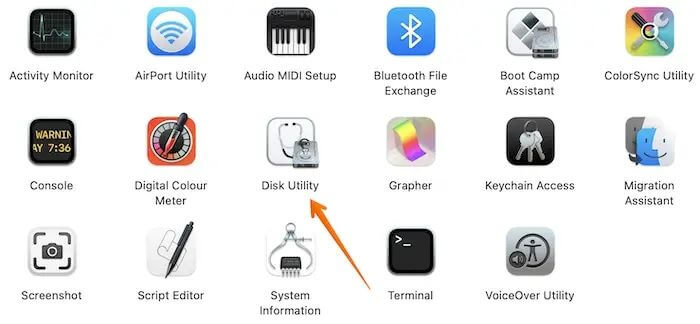
Step 4. Pick the corrupted drive.
Step 5. Choose First Aid.

Step 6. Select Done.
Step 7. Restart MacBook Pro/Air. You can also open Disk Utility in Recovery Mode:

How to Boot Mac into Disk Utility/Recovery Mode with Mac Startup Keys
How to boot Mac into Disk Utility? You can boot Mac into Disk Utility/Recovery mode in the usual ways. Read more >>
2. Update Outdated Applications on Mac to Fix File System Check Error
Upgrading outdated apps are crucial to resolving the File System Check Exit Code Is 8 error. In that case, you can follow these steps:
Step 1. Click on the Apple Menu.
Step 2. Choose App Store.

Step 3. Select Updates.
Step 4. Take a look at the updates available.
Step 5. Choose the ones you want or click on Update All button.

If you want to know how to update your Mac, you can check the following tutorial:

How to Update Mac [Detailed Written and Video Tutorials for macOS]
Updating your Mac isn't as easy as one thinks it is. It involves a few complex precautions and steps. Read more >>
3. Reformat External Hard Drive to Solve File System Check Exit Code Is 8
Erasing or reformatting the external hard drive is an excellent way to resolve this error. For that, here are the steps to follow:
Step 1. Open Disk Utility.
Step 2. Choose the external hard drive you want.
Step 3. Select the Erase button.
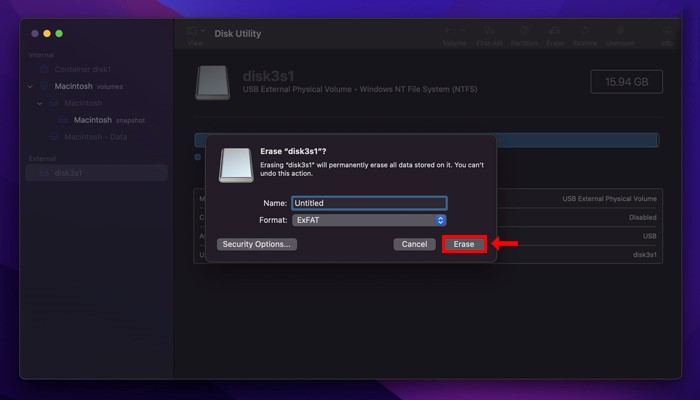
Step 4. Enter name and file system type.
Step 5. Select Erase. If you accidentally erased the wrong hard drive on your Mac, check this article to fix it:

Accidentally Erased Hard Drive in Disk Utility
It is common that users to accidentally erase a hard drive using Disk Utility on Mac. Read more >>
Fix File System Check Exit Code Is 8 on Macintosh HD
If you encounter this file system check exit issue on the Mac startup disk, you can fix the error in five methods:
1. Reboot Your Mac Device to Troubleshoot Problems
The first step is to restart the system. It will remove temp files, caches, and preferences generated by your Mac. It will also allow the system to reset things. If you are lucky, the error can get resolved with a simple reboot. For this, you need to follow these steps:
Step 1. Click the Apple menu.
Step 2. From the drop-down menu, choose "Restart" to restart MacBook Air.

Step 3. Wait for the system to shut down and power on. Now, see if the error still happens.
2. Fix File System Check Exit Code Is 8 in Safe Mode
In this solution, you must enter the Mac Safe Mode. Here, it is essential to understand that different models have different steps. Let's take a look:
For Apple Silicon Macs:
Step 1. Turn off the system.
Step 2. Press and hold the power button till you come across the startup options.
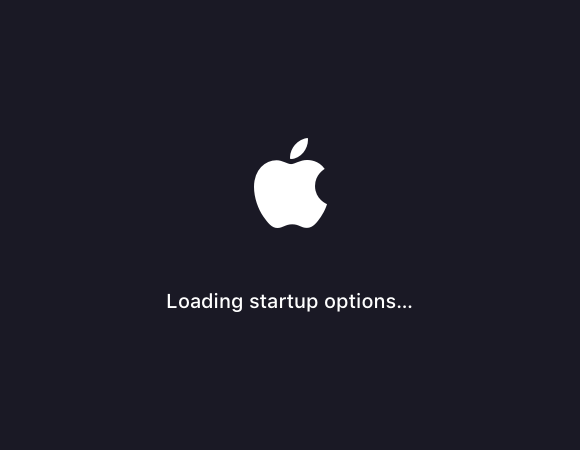
Step 3. Choose the startup disk.
Step 4. Now, press and hold the Shift key.
Step 5. Click Continue in Safe Mode.
For Intel-based Macs:
Step 1. Turn off the system.
Step 2. Please turn it on.
Step 3. At the same time, press and hold the Shift key.
Step 4. When the login screen appears, release the key.
Let the Safe mode check the disks. It will take time, but check if the error is still there after it's done. If your Mac cannot boot into Safe Mode successfully, check the following article to fix the problem:

4 Ways to Fix Mac Won't Start in Safe Mode
Your Mac won't start in safe mode because of improper security settings and other operations. Read more >>
3. Run First Aid in Recovery Mode to Fix the File System Check Error
Mac Recovery Mode allows users to access the system despite several issues. You can run First Aid to resolve this error. Here are the steps:
Step 1. Enter the macOS Recovery Mode.
Step 2. Wait for the macOS Utilities window to appear.
Step 3. Choose Disk Utility.
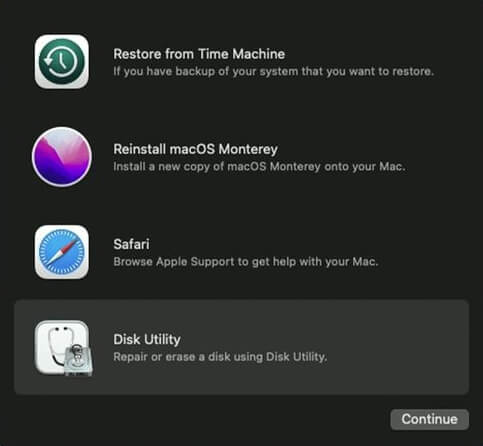
Step 4. Choose the disk with the error.
Step 5. Click on the First Aid button.

Step 6. Select Done.

Step 7. Restart the system.
4. Run FSCK Command to Fix the File System Check Exit Code Is 8
If First Aid can't resolve the error, you can run the FSCK command. For that, you must enter the Single User Mode. Check out the steps you need to follow:
Step 1. Turn off the system.
Step 2. Press Command and S keys when you hear the boot sound. You will enter the Single User Mode.
Step 3. Type fsck -fy.
Step 4. If you see the message "File system was modified", type the above command again.
Step 5. You will get the message "The volume (name) appears to be OK."
Step 6. Type reboot.
Step 7. Boot the system normally.
5. Reinstall macOS on Mac Device to Troubleshoot This Error
One reason for File System Check Exit Code Is 8 error is damaged or corrupt system files. In that case, reinstalling macOS can help. Take a look at the steps here:
Step 1. Restart the system in macOS Recovery Mode.
Step 2. Choose the Reinstall macOS option in the macOS Utilities window.
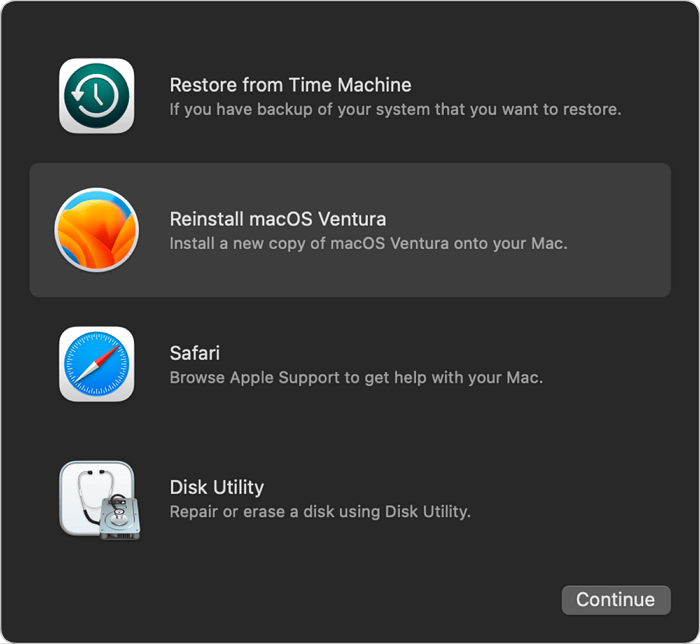
Step 3. Follow the instructions present on the screen.
When the macOS installation completes, check if the error is resolved. If this doesn't work, you need to contact Apple support.
Preventive Measures for File System Check Exit Code Is 8
Encountering the File System Check Exit Code Is 8 error can be disturbing, especially for new Mac users. However, there are different preventive measures one can adopt to prevent the error from happening.
For starters, make sure the system has enough power at all times. The Mac must shut down in a normal way to handle unexpected power outages. If you don't have an anti-virus software installed, do it immediately. It is essential to safeguard your system against malicious attacks.
Conduct check-ups regularly to detect and fix minor issues. If left unchecked, these issues can snowball and become big. Also, make sure to update apps whenever a new version is released. Keep in mind that data loss can occur anytime. The best solution is to keep a backup of the critical data.
Bottom Line
Several Mac users have reported facing the File System Check Exit Code Is 8 error. Though it can be frustrating, some reasons explain why it happens. It can be due to viruses, corrupted file directories, outdated drivers, etc. Luckily, there are several solutions one can use.
You can run First Aid or update the apps for external hard drives. And for Macintosh HD, users can reboot the system, run First Aid, run the FSCK command, etc. Also, it is necessary to understand that data loss can occur. In that case, opting for EaseUS Data Recovery Wizard for Mac is an excellent idea!
Check out EaseUS Data Recovery Wizard for Mac today!
File System Check Exit Code Is 8 FAQs
To know more about File System Check Exit Code Is 8 error, browse through the questions and answers listed below -
1. How to fix a corrupted hard drive on Mac?
To fix a corrupted hard drive on Mac, open the Disk Utility app and select the volume. Choose the First Aid button. Click Run and follow the on-screen instructions.
2. How to fix the file system check exit code is 8?
To fix the file system, check the exit code is 8, and restart the system. Run First Aid in recovery mode. Erase the drive and Reinstall macOS from the Utility window.
3. Why did I encounter the file system check exit code is 8?
Several reasons can cause the file system check exit code is 8 error. It can be due to a malware attack or out-of-date drivers. Other reasons include incorrect system settings, bad sector on the storage space, etc.
4. How to recover lost files after fixing the file system check exit code is 8?
You can recover lost files after fixing the file system check exit code is 8 if you have a backup. But you must opt for professional data recovery software if there is no backup. In that case, you can choose EaseUS Data Recovery Wizard for Mac. This software can quickly recover lost files after fixing the file system check exit code is 8.
Was This Page Helpful?
Dany is an editor of EaseUS who lives and works in Chengdu, China. She focuses on writing articles about data recovery on Mac devices and PCs. She is devoted to improving her writing skills and enriching her professional knowledge. Dany also enjoys reading detective novels in her spare time.
Related Articles
-
Is Windows 11 Good For Gaming? Your Best Answer in 2025!
![author icon]() Cici/2025-07-10
Cici/2025-07-10 -
How to Fix 'the Archive Is Either in Unknown Format Or Damaged' [100% Working Solution]
![author icon]() Cici/2025-07-04
Cici/2025-07-04 -
Emergency Fix for Windows 11 August 2025 Update
![author icon]() Shelly/2025-08-29
Shelly/2025-08-29 -
How to Restore Mac to a Previous Date with Time Machine/Migration Assistant/Recovery Software
![author icon]() Dany/2025-08-17
Dany/2025-08-17
EaseUS Data Recovery Services
EaseUS data recovery experts have uneaqualed expertise to repair disks/systems and salvage data from all devices like RAID, HDD, SSD, USB, etc.